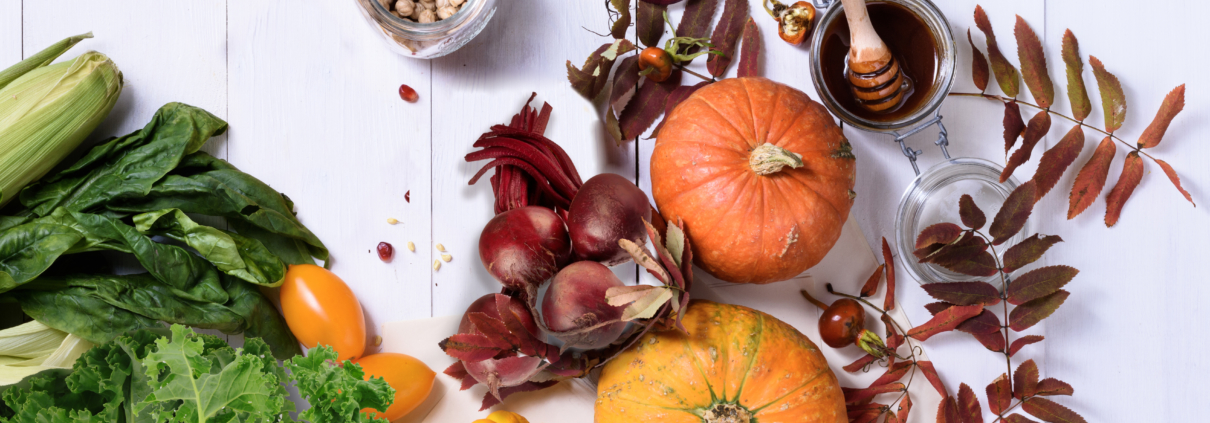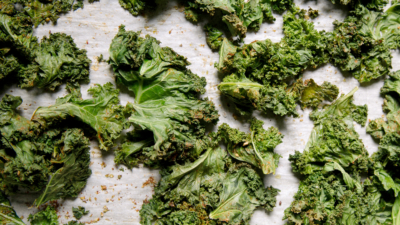Fall in Love with Autumn Vegetables
Each summer I anxiously await the beautiful red tomatoes to ripen on the vine. That first deliciously juicy bite is something I look forward to all year. Such tasty garden goodness doesn’t have to end once the leaves begin to turn, autumn can still produce amazing vegetables. And it doesn’t matter if you head to the farmers market, the local grocery store, or your own garden for late season vegetables—you’ll find great varieties for your dinner table.
Fall vegetables range from leafy to gourds, but a lot share the same nutritional benefits. They’re high in vitamin C, dietary fiber, and key nutrients and other essential vitamins. Best of all, they’re as tasty as any vegetable you get in the summer.
Cook up some of our favorite vegetables for fall.
Cabbage
It’s slang for cash, but autumn cabbage contains a wealth of nutrition. First cultivated 4,000 years ago in China, cabbage is rich in minerals and vitamins, has almost no fat, and is loaded with fiber, making it very healthy to eat. Cabbage is one of those vegetables that seems to be in season year-round. Cruciferous vegetables ripen at the end of summer and get a little sweeter as the weather gets colder.
Calories per cup (chopped): 22
Nutrition highlights: 54 percent of vitamin C of the recommended daily amount (RDA), 2.2 grams of dietary fiber, 8.2 grams of vitamin K
Best way to eat: Ultra versatile, cabbage can be boiled, steamed, sautéed, or even cooked in a microwave oven. No matter how you cook it, first peel the outer leaves off and remove the core. Quarter the cabbage and cook it however you please. Top with black pepper and garlic powder and you have a savory side dish.
Brussels sprouts
Think of them as baby cabbages and you’ll know exactly how they’ll taste. Their compact size means they roast beautifully with crispy charred edges. Try them as a side dish with your favorite meal or enjoy them with toasted almonds.
Calories per cup: 38
Nutrition highlights: 3 grams of protein, 124 percent of vitamin C, rich in potassium
Best way to eat: Cut off the brown ends of the Brussels sprouts and pull off any yellow outer leaves. Mix the clean sprouts in a bowl with olive oil, salt, and pepper. Pour them on a sheet pan and roast for 35 to 40 minutes at 375 degrees, until crisp on the outside and tender on the inside. Shake the pan from time to time to brown the sprouts evenly. Add toasted almond slices for an extra crunch.
Potatoes
Paging Dr. Mark Watney. You don’t have to be stuck on Mars to enjoy potatoes year-round. Packed with nutrients, including vitamin C, they’re great for fall classic meals like shepherd’s pie or potatoes au gratin. But there’s nothing better than a baked potato with low-fat sour cream. Potatoes are high in carbohydrates (37 grams), but they have a lot of other nutritional benefits.
Calories per medium potato: 163
Nutrition highlights: 70 percent of vitamin C, 4.7 grams of dietary fiber, rich in vitamin B6 and magnesium
Best way to eat: Nothing beats chili cheese French fries, but hey! We’re a nutritional company. Instead, try thinly slicing a potato (skin and all), brush on olive oiland bake at 400 degrees. Most of a potato’s nutrients are in the skin, so these homemade potato treats are a lot healthier than any processed spud.
Garlic
Spaghetti without garlic is like a car without a steering wheel. You go somewhere but you ain’t going to like where you get to. Zesty, spicy, and packed with nutrients, garlic is usually harvested in the fall, making it perfect for everything from Italian food to homemade stir fry. Part of the allium family (onions, shallots, and leeks), garlic is not only delicious, but it also packs a nutritional punch into a very small bite.
Calories per ounce: 42
Nutrition highlights: 23 percent of manganese, 17 percent of vitamin B6, 15 percent of vitamin C, 6 percent of selenium, and notable levels of calcium, copper, potassium, phosphorus, iron, and vitamin B1
Best way to eat: Most of us, especially vampires, don’t eat raw garlic because of its pugnacious taste, but slice, mince, or smash to add a burst of flavor to take your pasta dishes to the next level. For something simple, try frying chicken thighs in a mixture of olive oil, rosemary, garlic cloves, and crushed red pepper. Or bake garlic in a small bowl with olive oil and spread over crostini.
Kale
We should all have kale’s PR agent because it’s everywhere—and for good reason. Its mild and sweet flavor makes it a staple in my kitchen. Perfect for slaws, salads, or ehnancing your next pasta dish, kale is one of the best tasting superfoods. Part of the cabbage family, it thrives during cooler weather, making fresh autumn kale harvests easy—and delicious.
Calories per chopped kale: 33
Nutrition highlights: 134 percent of vitamin C, 133 percent vitamin A, 2.9 grams of protein, zero cholesterol
Best way to cook: Simple is better when it comes to kale. In a salad bowl, add a teaspoon of olive oil, a dash of balsamic vinegar, a drop of honey, and a dash of garlic salt. Wisk until creamy. Add a cup of baby kale and toss. Spice things up with some sliced almonds and fresh parmesan and serve at your next dinner party.
Beets
This old-fashioned favorite is trendy again. Great for pickling and canning, beets are a beautiful vegetable, rich in vitamins and nutrients. They can be red, yellow, pink, or even striped, but whatever type you harvest, you’ll get a tasty nutrition bomb. They have a rich, earthy flavor that pairs remarkable with cheese or is the perfect addition to your fall salad.
Calories in a cup: 59
Nutrition highlights: 3.8 grams of dietary fiber, 12 percent of potassium, rich in vitamin C, calcium, and magnesium
Best way to cook: I love to have the beets do the talking when I cook them. Keep it simple and wrap cleaned beets in tin foil with a little bit of olive oil, salt, and pepper. Bake for an hour at 400 degrees (or until tender) and serve them at dinner as a fresh and healthy side dish.
Turnips
A cousin of the beet, turnips only suffer from one problem—their name. Turnips are excellent at soaking up flavor and add a hearty element to your meals and stews. They’re high in calcium, phosphorus, potassium, sodium, and magnesium. Plus, they’re rich in fiber and have a great crunchy flavor.
Calories per cup: 36
Nutrition highlights: 2.5 grams of potassium, 2.3 grams of dietary fiber, 1.2 grams of protein, 45 percent of vitamin C
Best way to cook: If you’re looking for the texture of mashed potatoes without all of the carbs, try boiling turnips and mashing them with a little bit of ghee or coconut milk.
Pumpkins
The king daddy of fall vegetables. Ok, technically pumpkins are fruits but it is the quintessential gourd of autumn. Once the leaves start changing, you can’t cross the street without seeing pumpkins everywhere. From spice lattes to Halloween decorations, pumpkins are as much a part of fall as the World Series. But if you’re looking for a healthy way to celebrate the famous orange gourd, try making a healthy soup, or add cut roasted pumpkin to your next salad or side dish.
Calories per cup: 30
Nutrition highlights: 197 percent of vitamin A, 3.94 grams of potassium, rich in vitamin C, iron, vitamin B6, and magnesium
Best way to cook: It would be nice if a slice of pumpkin pie with whipped cream was the healthiest option, but most canned pumpkin pie filling is loaded with syrup and sugar. To satisfy your pumpkin sweet tooth, try homemade frozen pumpkin yogurt. Mix 2 cups Greek yogurt, 4 ounces low-fat cream cheese, 1/2 cup of fresh pumpkin puree, 1/4 cup brown sugar, 1 Tbsp. vanilla extract, 1 Tbsp. all spice, and a pinch of kosher salt. Freeze for 2 hours and serve with graham crackers.
Okay, maybe frozen pumpkin yogurt isn’t the healthiest thing on the planet, but you’ve earned it if you’ve added healthy autumn vegetables to your diet.
We’d love to know your favorite fall vegetable. Share this and your family’s best fall recipes in our comment section.














I love pumpkin and leek soup..I grew up with pumpkin as a staple vegetables in the Caribbean…so many ways to cook it. I recently saw a dog owner making homemade pumpkin cookies for her dog treats..yummy.